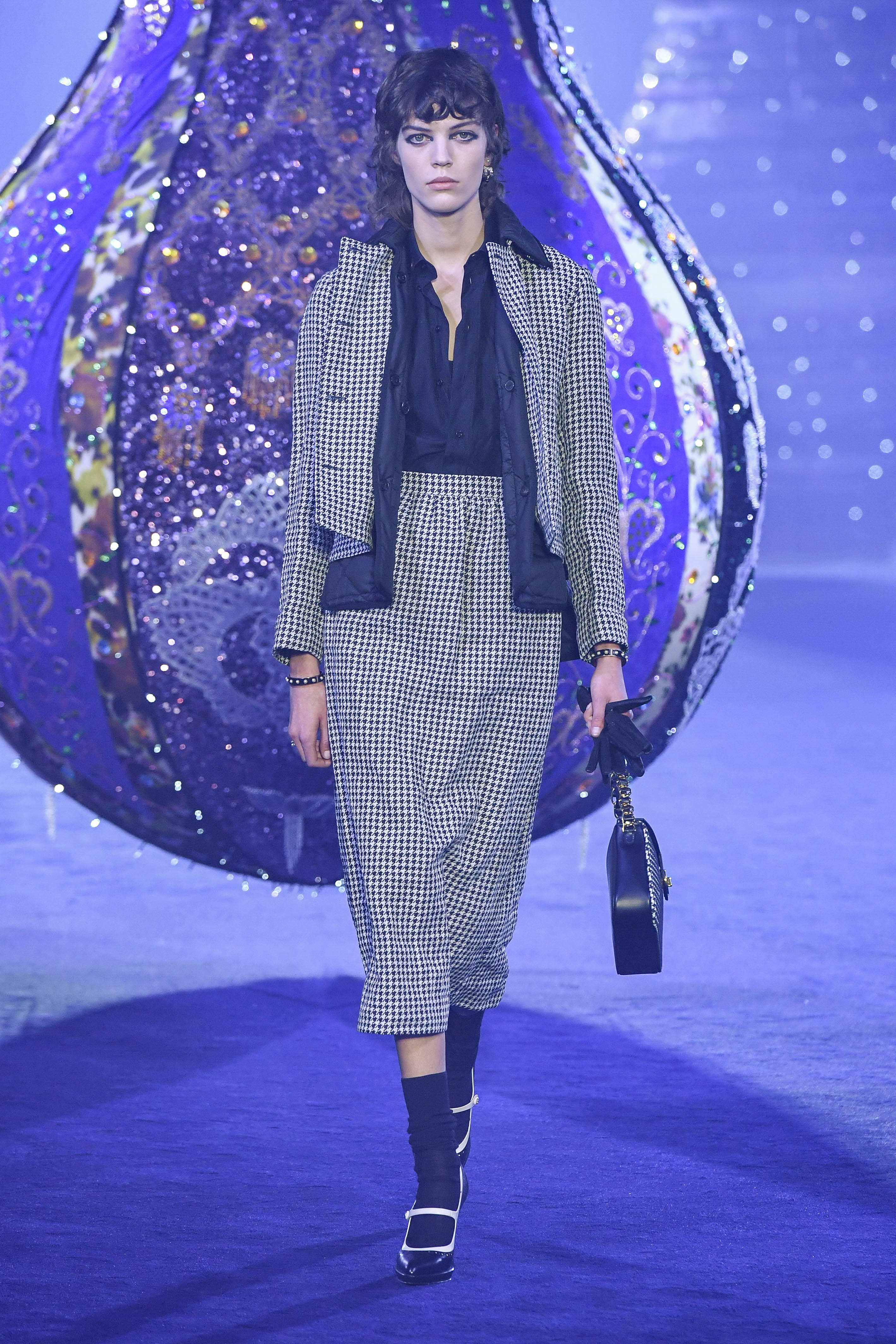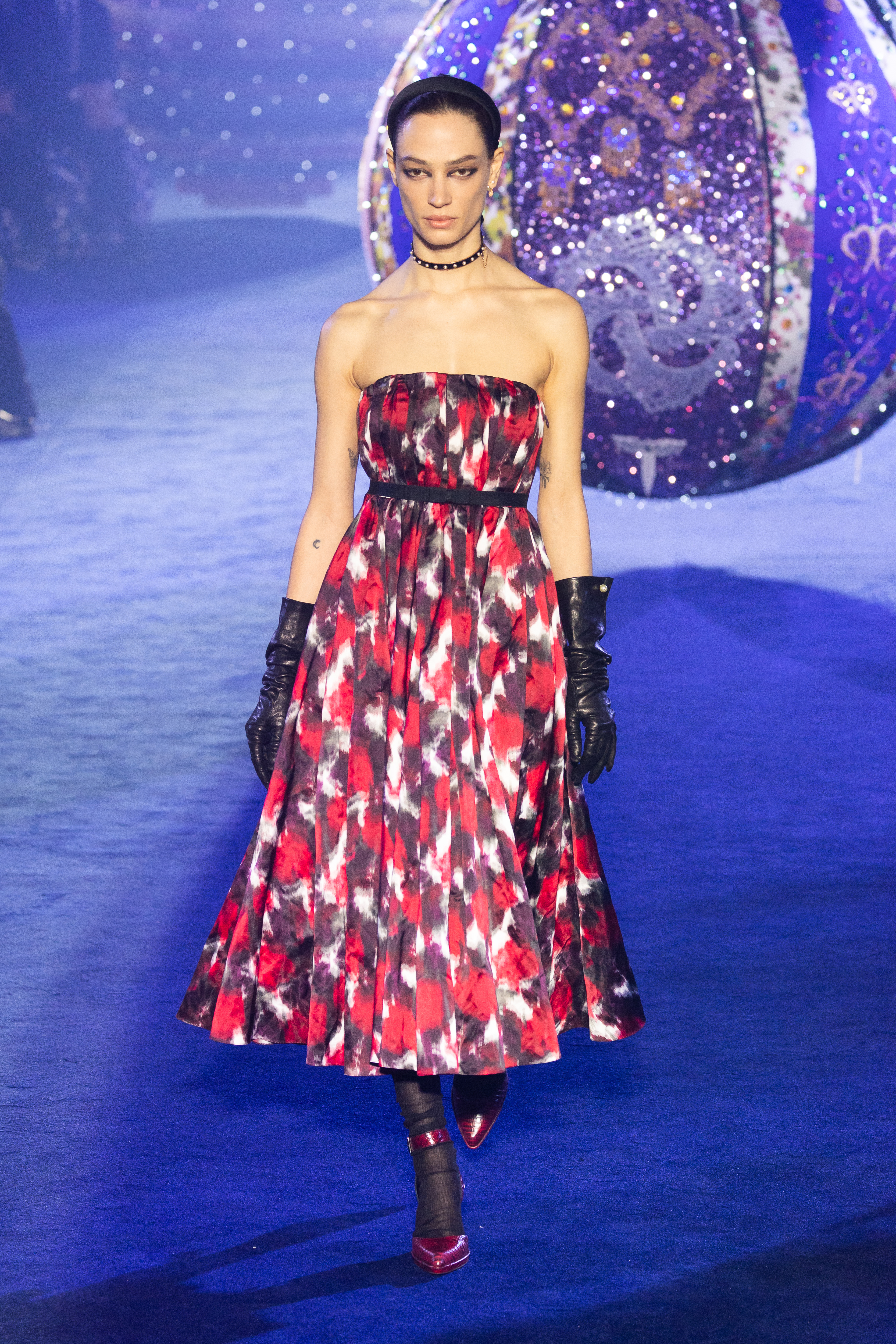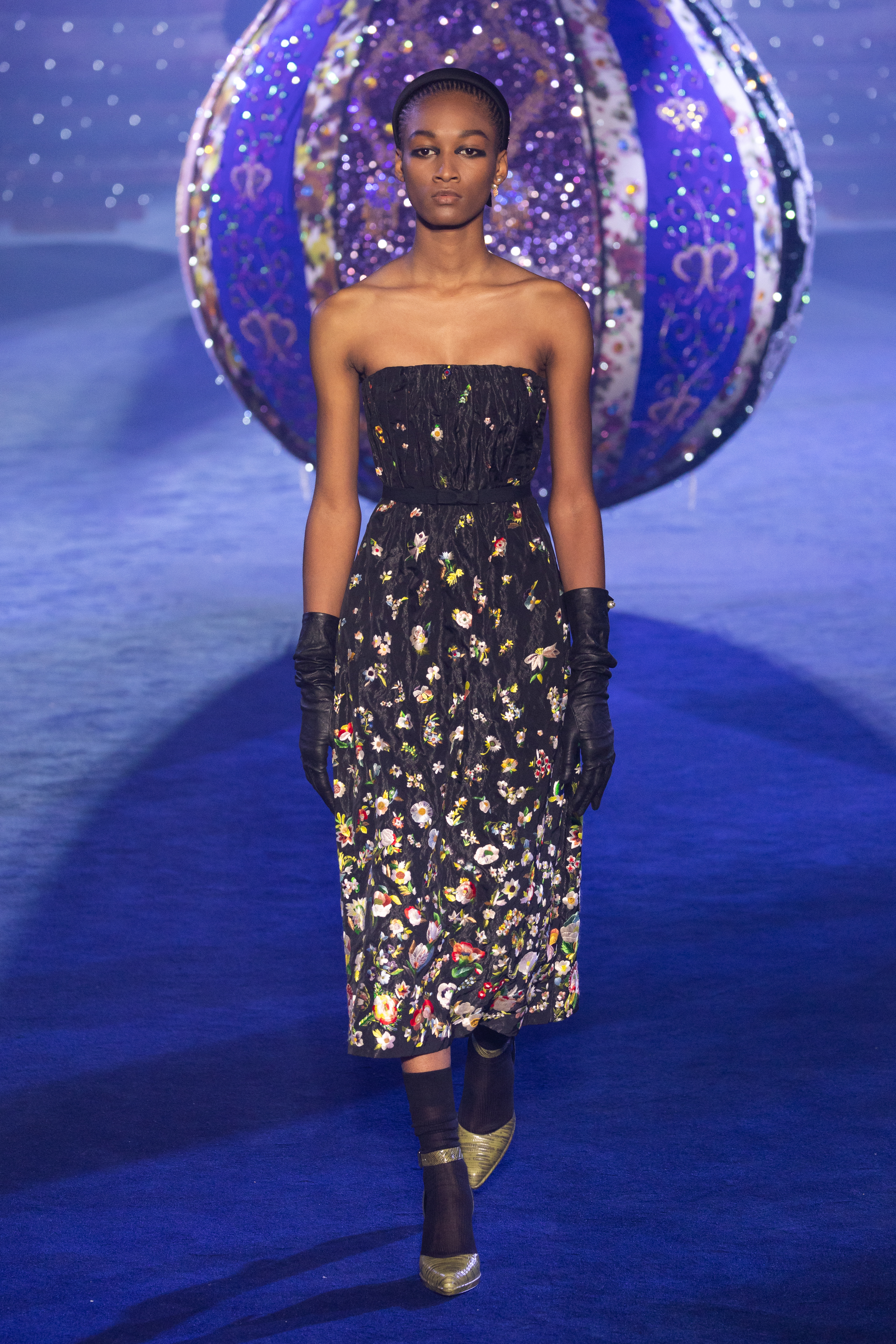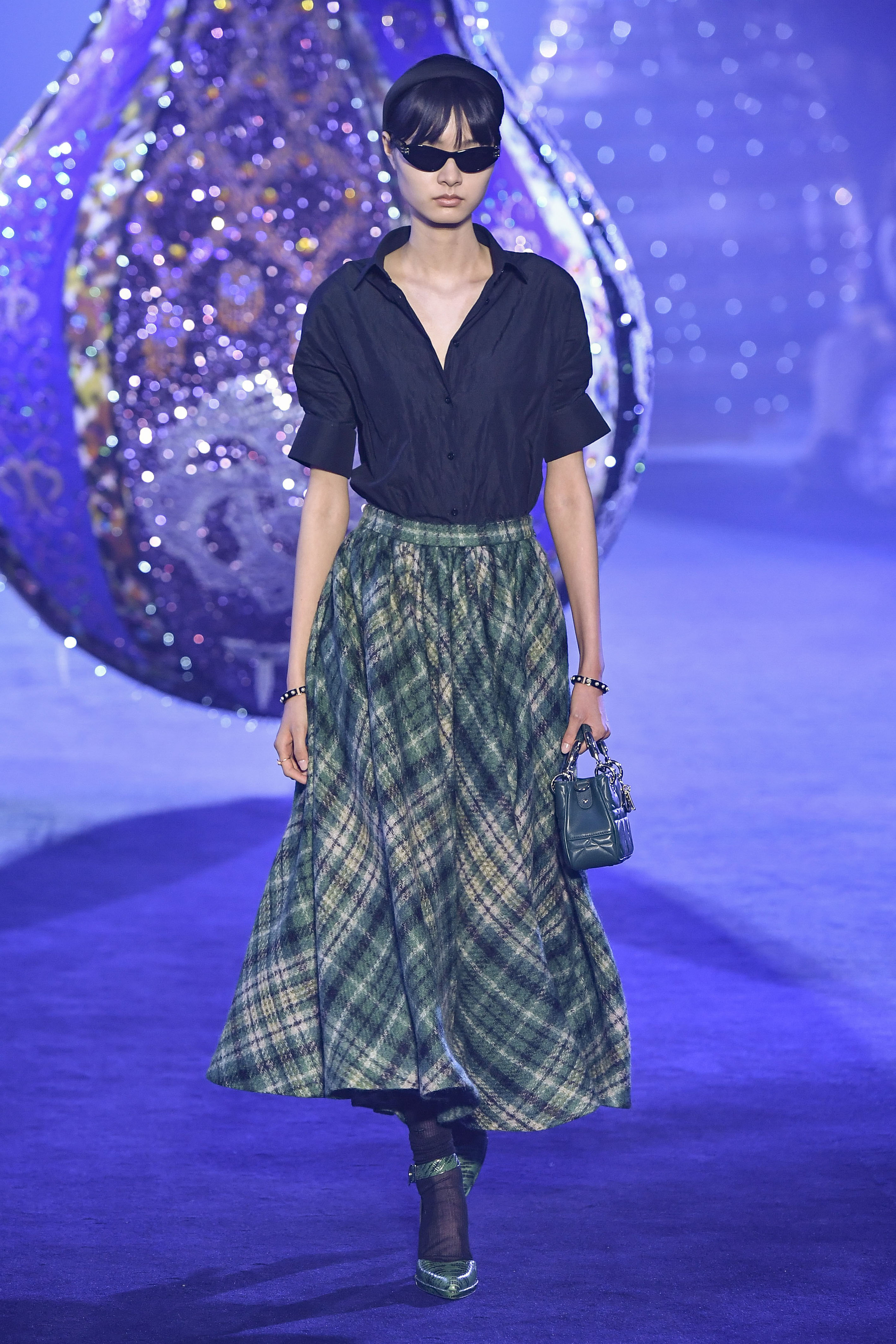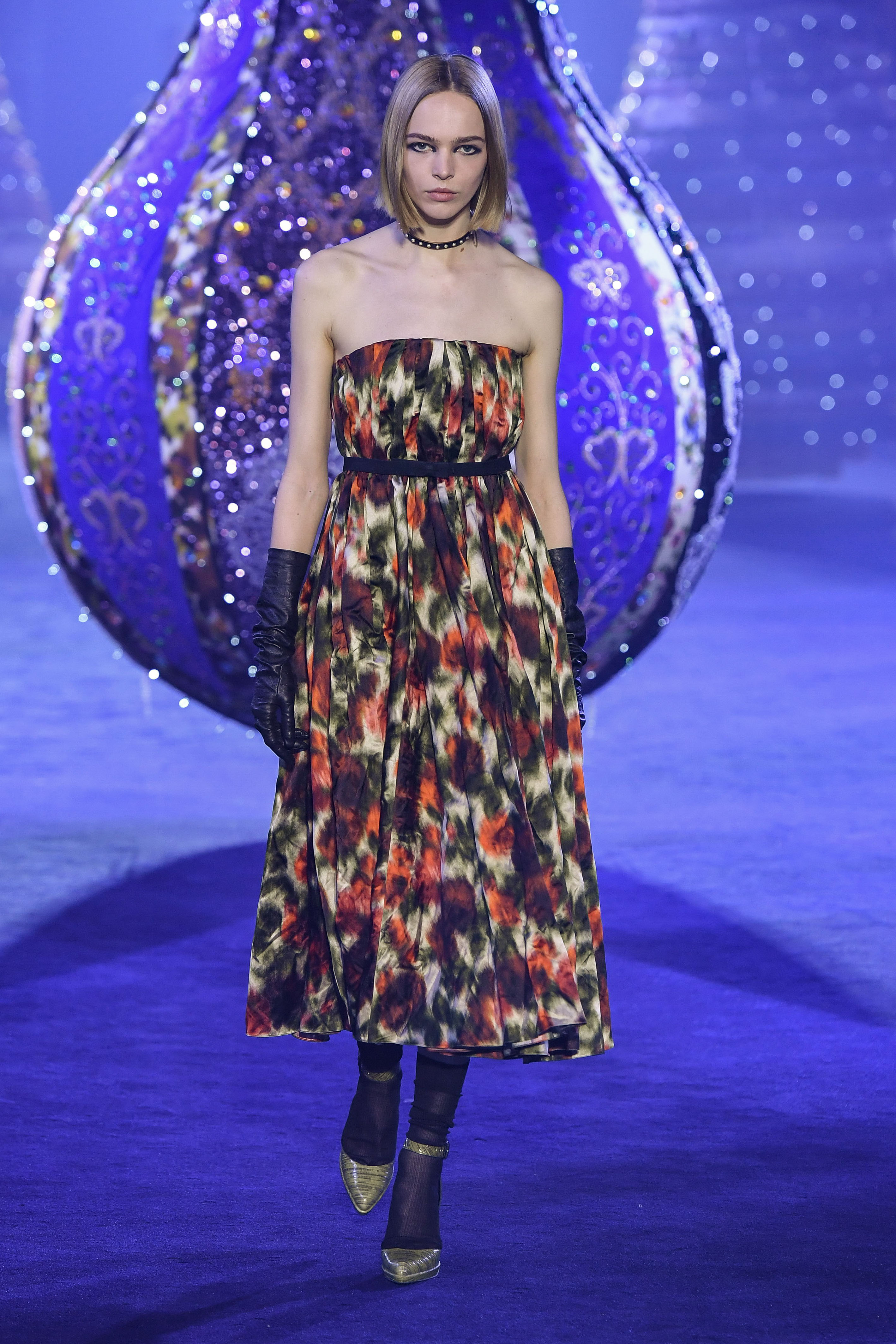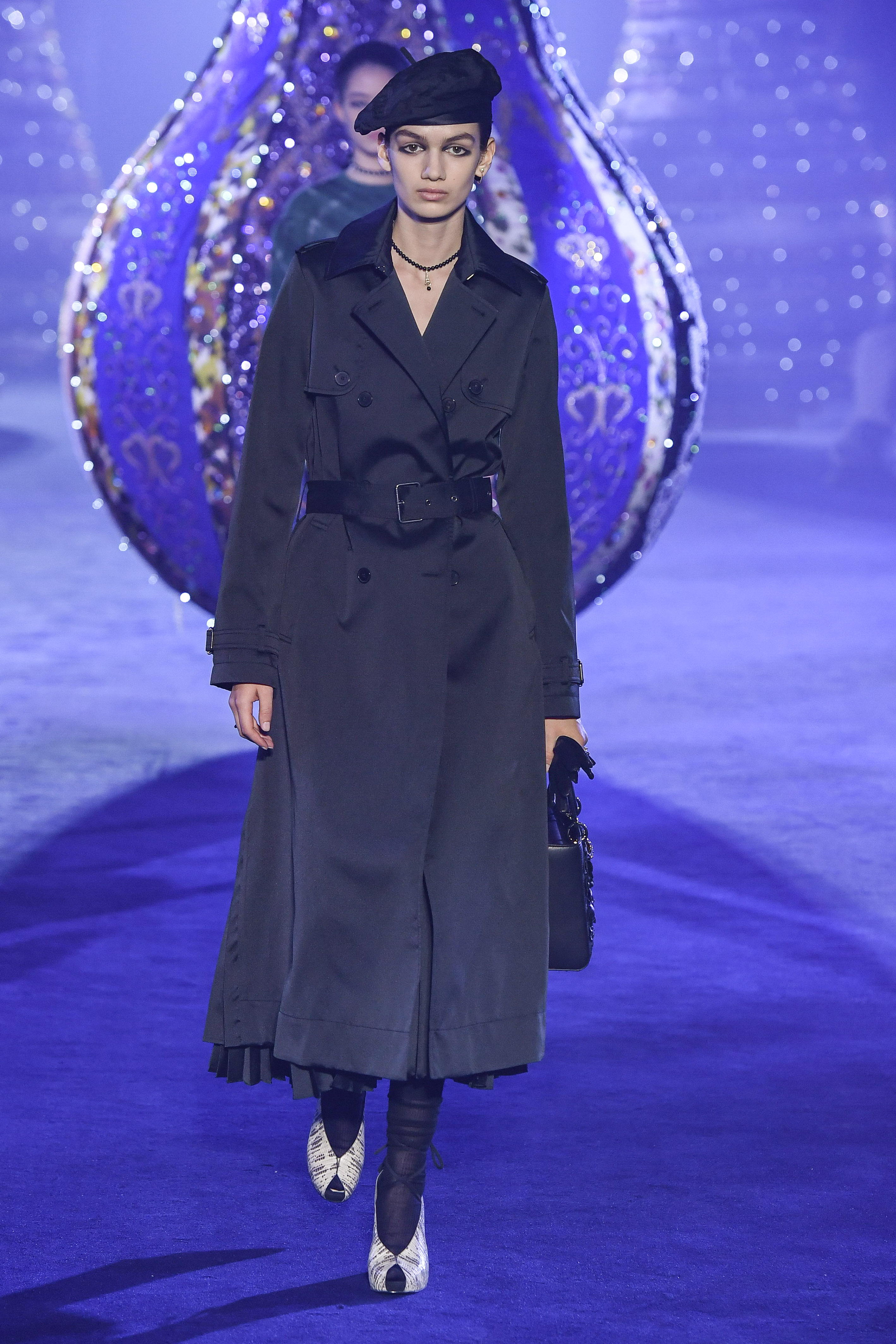
Three women held Maria Grazia Chiuri’s unswerving attention when she designed her fall 2023 collection. Catherine Dior, the sister of the French couturier and French Resistance fighter; Juliette Gréco, the fringe-faced French singer and actress who graced the sets of filmmakers such as Jean Cocteau; and French chanteuse Édith Piaf, whose 1960s hit ‘Non, je ne regrette rien’ plays in the mind at Piaf’s mention and was also emblazoned on T-shirts at the show.
Together, they inspired a collection that felt alternatively utilitarian and upbeat; conversant with the women Chiuri wants to dress in Dior now but contextualised by each of her muse’s wartime experiences. For example, Chiuri explained to Vogue.com: “Catherine Dior had come back from a concentration camp, and became an entrepreneur who never married, though she had a long-term relationship. We forget that in the fifties these women were more liberated than we can imagine.” It got the designer reflecting on the female role models in her own life. “It was also a way to think about myself. Because in my house, my mother and grandmother were independent women who had come through the Second World War.”
As per tradition at Dior under Chiuri’s helm, any nods to the fifties—cinched jackets that harked back to Dior’s New Look, houndstooth skirt suits and plenty of post-war black—were threaded into the present-day via an artist collaboration. Portuguese artist Joana Vasconcelos constructed a textile installation, featuring bulbous shapes and petal-like patterns that alighted the space and hung from the ceiling in an homage to the original Miss Dior. Against this backdrop, black pleated skirts paired with puffer jackets in signature Dior diamond quilting, trench coats and parka jackets felt less austere. A series of dresses in relaxed silhouettes—some embellished with flowers in such a way as to appear in mid-air, collecting abundantly at the hem, and others strapless with floral prints repetitiously blurred and superimposed on one another to appear abstract—lightened the mood, swishing happily around the body to distinguish from more conservative, severe versions that came before.
These catalysed a cadence change. For the latter half of the collection, Chiuri introduced tartan red and green, grey (darker than Dior’s usual), blue and champagne into the mix via leopard print, windowpane checks and maps of Paris rendered into a print. It’s her way of injecting the past with her own playful handwriting. It serves as an acute reminder of Chiuri’s unique understanding of women including herself, articulated beautifully through her clothing: only by looking to, and learning from, those that came before us can we fully know ourselves.

